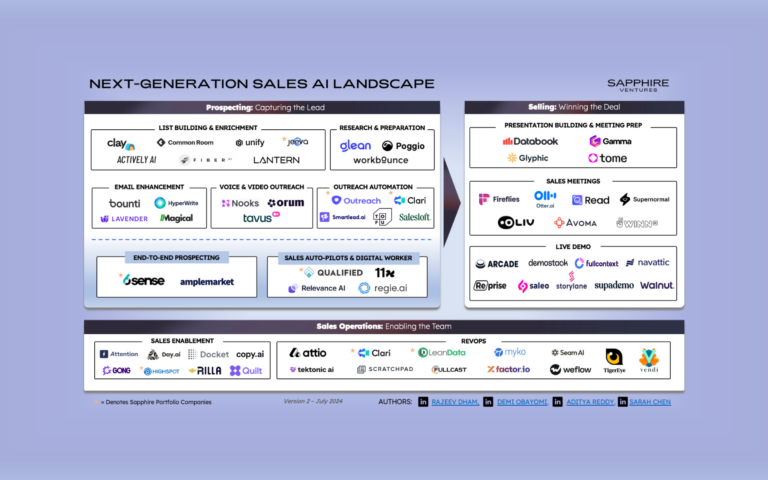For many in the U.S., we are in the middle of our fourth week of sheltering in place as COVID-19 continues to spread throughout communities. While the health and safety of society is top priority, the shutting down of nonessential businesses all over the country has caused an economic slowdown with nearly 10 million people filing for unemployment as we write this.
For many start-ups, managing cash burn is critical to coming out of this crisis intact. With that, comes the unfortunate reality of cutting spend across all areas of the business, including employees. It saddens us to write about the reduction in force, but we feel that it’s our responsibility to share how we’re thinking about this difficult topic and what we are advising our portfolio companies.
At Sapphire Ventures, our goal isn’t to provide a detailed playbook on how to handle letting people go with this post. Others have done that quite well already. Our objective is to suggest some options to avoid or delay layoffs, share what we think are the most important considerations when letting people go and offer strategies to stabilize the existing workforce.
Options to Avoid or Delay Layoffs
Every company is experiencing the financial impact of COVID-19 differently. Some are booming if they’re fortunate to be in a relevant sector, while others are severely struggling (pet care startup Rover laid off 41% of its workforce last week). For those companies that aren’t doing well, but have flexibility, we suggest considering these alternatives, in no particular order, before taking the unpleasant step of letting people go:
-Freeze hiring
-Put bonuses and annual merit increases on hold
-Request rent furloughs
-Ask for vendor payment extensions
-Cut travel, meal, holiday party and all unnecessary spend
-Reduce CEO and executive pay
-Implement company-wide pay cuts
-Consider furloughing employees in locations where health benefits won’t be impacted
Guidance On Letting People Go
If you’re at this point, you’ve tried everything to keep your business moving forward without having to let people go. There is no pleasant way to lay people off. It’s a heartbreaking and deeply personal experience for those that are let go. But there is an elegant way to approach the situation and to ensure that it’s a reflection of your culture. And while every company’s culture is unique, we suggest following these best practices:
- Do what it takes to keep the “muscle.” You’ve likely heard the saying before: Keep the muscle and trim the fat. This is an important practice during good times and bad, but in the most difficult times, it’s critical. It’s easy to make the wrong decision when determining which individuals or teams to let go, especially if cash is short and you need to move quickly. So make sure that if you’re having to lay people off, you are doing it in areas of the business that won’t be detrimental to your company’s survival, and ultimately, recovery. Doing this will require you to be brutally honest with yourself when thinking about functions, departments and individuals who you deem to be “muscle.” It won’t be easy, but you should do whatever it takes to retain these people and teams. Because if you let them go, they’ll be hard to replace or rehire once recovery ensues.
- Do it all at once. Some companies let their people go in rounds. The intention is the right one–letting go no more than necessary. But the outcome of having to execute another round of layoffs and maybe a third is traumatic for existing employees. We’ve seen this before in our own operating experiences, and the impact is crippling. Employees are constantly worried if they’re next on the chopping block, which has a negative effect on productivity. Let as many people go as you need to in order to ensure that in 18-24 months, your company will be a company of consequence.
- Transparent communication. When start-ups find themselves in a state of financial unrest, it’s the CEO’s responsibility to share the hard truths with employees. We don’t believe that there’s a blueprint on how to communicate with employees, customers and even investors about a downsizing. Do what aligns to your culture, what feels right to you and what you believe will resonate with your stakeholders. But make sure to be intentional, thoughtful and honest. And don’t underestimate the power of transparency–people trust it, they feel included and will better be able to prepare for whatever the outcome may be. Equally important is to regularly communicate with your employees. In other words, one email is far from enough. We’ll talk about this later, but it’s crucial to maintain regular check-ins with existing employees who will be wondering about the health of the business week over week, month over month.
- Respect employees on the way out. This one is especially hard right now given most employees are remote, and many layoffs will have to happen virtually. That said, following some of the same practices that you would use in person still apply. Make sure conversations are happening one-on-one, have HR join the meeting (via a separate meeting invite) and give people time to process and say good-bye (remember, they’re not being fired). Find a way to make executives available virtually to answer any questions–for affected and unaffected employees. Last but not least, ask yourself how can you help those you’re letting go. We’ve seen one of our start-ups form a services group, which repurposes recruiting and events staff. This new team helps with job searches, offers resume writing guidance, assists in LinkedIn profile building and connects employees who have been let go with companies looking to hire. How you manage this process will influence your employer brand and attractiveness once the economy recovers.
Strategies to Stabilize the Existing Workforce
Once a start-up has gone through a reduction in force, company culture will inevitably be rattled. The CEO and executives need to take it upon themselves to rebuild it by providing a clear vision for the future and keeping staff motivated. Here are some ways to do that:
- Ongoing employee engagement: Once you’ve communicated to your employees that you’ve had to layoff employees, be sure to regularly communicate with existing ones. Develop a cadence where the CEO communicates with all employees once a week, and make sure that updates on business performance are included. If things aren’t great financially, continue to be honest, but keep employees motivated by sharing customer wins and any positive press. During unsettling times, you can’t go wrong with over-communication–just make sure you’re sharing the bad with the good. Also consider holding virtual Town Halls where you can provide a regular update and open up the floor for Q&A where employees can be heard.
- Provide learning opportunities: Keeping employees energized can be hard during an economic downturn. Providing learning and growth opportunities with stretch projects or cross-functional assignments can help keep employees stimulated. They’ll be able to feel like they’re learning something new and can even see it as an opportunity to grow their career exponentially once the economy bounces back. Another option is to create a gamified approach to projects in order to spur employee interaction and innovation. There’s no reason a hackathon can’t happen in a down economy.
- Lead by example: Great leaders lead by example by demonstrating to others how the work is done and setting the tone for the business. Now is the time to do just that. Openly communicate with your employees and stay calm. Leaders set the emotional tone for their troops. If the leader panics, the troops will panic. In addition, be agile and adapt to change with a good attitude. Find ways to create moments of joy and have a good time together. Show courage, empathy and commitment, and your employees will be more likely to ride out the storm with you. Leading by example also means assuming more than your fair share of pain. If you have to implement company-wide pay cuts, be the kind of leader that takes the greatest hit. We’ve seen some inspiring executives bring their salaries down to zero before considering cutting employee paychecks.
These are without a doubt difficult times, but we are here for you. The Sapphire Ventures Talent team is in constant contact with companies in our portfolio. We’re advising, providing communications best practices and supporting the HR department in any way we can. We’re also keeping a close eye on what positions remain open (see here), and we’re working with those start-ups to ensure employees that no longer have jobs are able to experience a soft landing.





